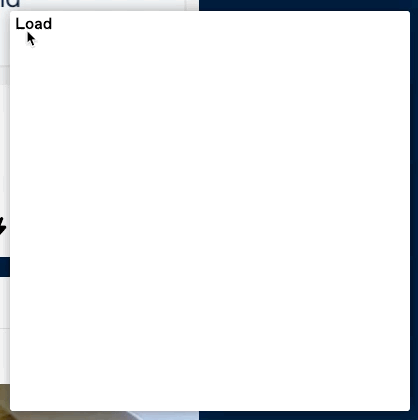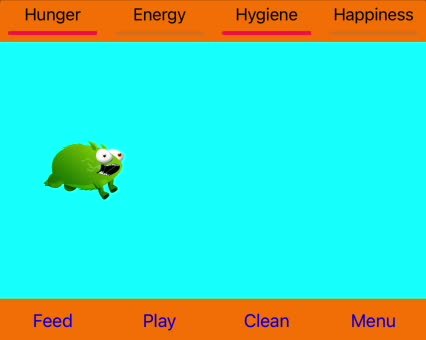Mlu - That's A Blog.

More Posts from Mlu and Others
Tumblr Hack Week, September 2021 Edition
It was HACK WEEK at Tumblr and Automattic earlier this month! Just like back in June, we stopped our normal work to focus on some great possible new features, some bug fixing, and more. Here’s a taste of some of the projects that got hacked together. Some of these will hopefully make it to be real new parts of Tumblr, but as always, we can’t guarantee anything here with a timeline or even that they’ll ever see the light of day again -- they’re hacks!
Fixing Tag URL issues across Tumblr
L and @superchlorine are working on fixing a lot of issues about how we parse tags in URLs, so that we are more consistent across the web and the apps. This is something that we know has been frustrating for a long time: trying to search for posts tagged with a + sign or with spaces often doesn’t work as you’d expect. But not for much longer! We’ve been slowly fixing these issues one at a time and posting about it on the Changes blog.

Tumblr Ignite: pay to promote posts!
This actually carried over from a previous Hack Day: the ability to click a little 🔥 button on a post, throw down some cash, and promote that post as a Sponsored post across Tumblr. There’d be some kind of moderation queue on our side to ensure nothing unsafe gets sponsored in this way, and any sponsored post would be “frozen” and not editable during the time it’s being promoted. The Ads Core team, lead by @thstall with help from Argyris, Oleg, and Nathan took this pretty far towards being production-ready.

Bringing two-factor authentication settings to the mobile apps
We really want as many people as possible to protect their accounts by leveraging Two Factor Authentication, which you can currently enable by going to your account settings on the web. But it’d be even better to be able to access these settings in the mobile apps themselves! Megs, Adam, and Eduardo are still working to make this a reality.

The Return of Reblog Graphs
For those of you who remember this experiment in Tumblr Labs, this is a popup you can check out on posts which shows you a graph of all of the reblogs on a post and how they’re connected. This is one crazy way you can visualize how posts on Tumblr get reblogged around in huge chains and clusters! @cyle got a working React-based prototype working for Hack Week, and now we’re working to bring this back to the web for real.

Tumblr Fan Funding
Connie and the Post+ team built a prototype of Fan Funding on Tumblr, to help creators set a funding goal and get to that goal, using a lot of the same technology we used to create Post+.

Stay tuned to the @changes blog to find out if any of these end up becoming a part of Tumblr for real!


Air show, Jamie Kripke
Arnold Schwarzenegger on Twitter
That's why I chose a work from home job, nobody knows I'm wearing my bugs bunny jumpsuit on an all-team video call. Wait...
the most fictional thing about series and movies is people all dressed up at home
please don't ever come to house without warning first or you'll find me in my pjs
So good to have John Frusciante back on the guitar!
Tumblr Hack Week, September 2022 Edition
It was Hack Week (more than just a day!) once again at Tumblr! A couple of times per year we slow down our normal work and spend a week working on whatever we want and see how far we can get with our hacks. The main star of the last Hack Week was the “Summon crab!” button, and we loved it so much that we rolled it out not just for April Fools this year, but we made it our first gift-able widget in TumblrMart!
Here are some of the projects that got made for this most recent Hack Week in September. Some of these things you may also end up seeing on the site…
Tumbeast Digital Pet
Ben worked on adding our friendly server room Tumbeasts to Tumblr as a cute little digital pet. You can feed them and play with them, and they poop and get unhappy and need tending, of course. Who wouldn’t want one of these to take care of every day on Tumblr, forever and ever?

Tumblr Blaze on TumblrMart
@adalpari added Tumblr Blaze as a gift-able item in TumblrMart, which would allow folks to buy Blaze "credits" for other people. Perfect for those times you see an amazing post on Tumblr that definitely deserves to be spread around, and you don’t mind throwing some money at letting that person have a chance to spread it via Blaze!

User Account Switcher
@yi5h hacked together an account switcher for the web, so that folks can log in to more than one Tumblr account and easily switch back and forth between them. Super handy if you have one account for your roleplaying character, and another for your Star Trek fandom discussions. Very useful!

Tumblr Collections
On web as well, João made a version of an idea that’s floated around many times, the idea of being able to organize posts on Tumblr into "collections" that can be named and shared. I think everyone would very much enjoy having a collection called "waves" that’s just soothing GIFs of ocean waves.

As always, stay tuned to the @changes blog to see if any of these hacks make it on Tumblr for real!

StreamBuilder: our open-source framework for powering your dashboard.
Today, we’re abnormally jazzed to announce that we’re open-sourcing the custom framework we built to power your dashboard on Tumblr. We call it StreamBuilder, and we’ve been using it for many years.
First things first. What is open-sourcing? Open sourcing is a decentralized software development model that encourages open collaboration. In more accessible language, it is any program whose source code is made available for use or modification as users or other developers see fit.
What, then, is StreamBuilder? Well, every time you hit your Following feed, or For You, or search results, a blog’s posts, a list of tagged posts, or even check out blog recommendations, you’re using this framework under the hood. If you want to dive into the code, check it out here on GitHub!
StreamBuilder has a lot going on. The primary architecture centers around “streams” of content: whether posts from a blog, a list of blogs you’re following, posts using a specific tag, or posts relating to a search. These are separate kinds of streams, which can be mixed together, filtered based on certain criteria, ranked for relevancy or engagement likelihood, and more.
On your Tumblr dashboard today you can see how there are posts from blogs you follow, mixed with posts from tags you follow, mixed with blog recommendations. Each of those is a separate stream, with its own logic, but sharing this same framework. We inject those recommendations at certain intervals, filter posts based on who you’re blocking, and rank the posts for relevancy if you have “Best stuff first” enabled. Those are all examples of the functionality StreamBuilder affords for us.
So, what’s included in the box?
The full framework library of code that we use today, on Tumblr, to power almost every feed of content you see on the platform.
A YAML syntax for composing streams of content, and how to filter, inject, and rank them.
Abstractions for programmatically composing, filtering, ranking, injecting, and debugging streams.
Abstractions for composing streams together—such as with carousels, for streams-within-streams.
An abstraction for cursor-based pagination for complex stream templates.
Unit tests covering the public interface for the library and most of the underlying code.
What’s still to come
Documentation. We have a lot to migrate from our own internal tools and put in here!
More example stream templates and example implementations of different common streams.
If you have questions, please check out the code and file an issue there.
Last hellsite standing




3 nouveaux personnages se promènent dans Nantes
-
 unserhumanomas liked this · 6 months ago
unserhumanomas liked this · 6 months ago -
 viernuleen401 liked this · 6 months ago
viernuleen401 liked this · 6 months ago -
 automaticbearddreamland liked this · 7 months ago
automaticbearddreamland liked this · 7 months ago -
 deadpools-side-kick reblogged this · 9 months ago
deadpools-side-kick reblogged this · 9 months ago -
 deadpools-side-kick liked this · 9 months ago
deadpools-side-kick liked this · 9 months ago -
 asdfg-jpg liked this · 1 year ago
asdfg-jpg liked this · 1 year ago -
 noe77 reblogged this · 1 year ago
noe77 reblogged this · 1 year ago -
 sumno liked this · 1 year ago
sumno liked this · 1 year ago -
 cocoatime liked this · 1 year ago
cocoatime liked this · 1 year ago -
 catjasmin liked this · 1 year ago
catjasmin liked this · 1 year ago -
 steveharrington09 liked this · 2 years ago
steveharrington09 liked this · 2 years ago -
 reality4none liked this · 2 years ago
reality4none liked this · 2 years ago -
 lillekins reblogged this · 2 years ago
lillekins reblogged this · 2 years ago -
 alaztortarrant28 liked this · 2 years ago
alaztortarrant28 liked this · 2 years ago -
 giovannaoli liked this · 2 years ago
giovannaoli liked this · 2 years ago -
 olaf-my-luv liked this · 2 years ago
olaf-my-luv liked this · 2 years ago -
 tremendouswetlandsparentingtaco liked this · 2 years ago
tremendouswetlandsparentingtaco liked this · 2 years ago -
 jamajia liked this · 2 years ago
jamajia liked this · 2 years ago -
 aluczs-blog reblogged this · 2 years ago
aluczs-blog reblogged this · 2 years ago -
 foreverunicorn0 reblogged this · 2 years ago
foreverunicorn0 reblogged this · 2 years ago -
 trydianth reblogged this · 2 years ago
trydianth reblogged this · 2 years ago -
 trydianth liked this · 2 years ago
trydianth liked this · 2 years ago -
 bobpil liked this · 2 years ago
bobpil liked this · 2 years ago -
 cada-sonrisa-que-finjas liked this · 2 years ago
cada-sonrisa-que-finjas liked this · 2 years ago -
 valdomirocorrea liked this · 2 years ago
valdomirocorrea liked this · 2 years ago -
 dullahandyke liked this · 2 years ago
dullahandyke liked this · 2 years ago -
 ilbubbleil liked this · 2 years ago
ilbubbleil liked this · 2 years ago -
 friskiuwr liked this · 2 years ago
friskiuwr liked this · 2 years ago -
 rubywolf12 liked this · 2 years ago
rubywolf12 liked this · 2 years ago -
 fannafiction liked this · 2 years ago
fannafiction liked this · 2 years ago -
 ace-does-stuff reblogged this · 2 years ago
ace-does-stuff reblogged this · 2 years ago -
 ace-does-stuff liked this · 2 years ago
ace-does-stuff liked this · 2 years ago -
 pittsie14 liked this · 2 years ago
pittsie14 liked this · 2 years ago -
 cool-stuffs-i-guess liked this · 2 years ago
cool-stuffs-i-guess liked this · 2 years ago -
 ratbitepunk liked this · 2 years ago
ratbitepunk liked this · 2 years ago -
 wolfstarke30 liked this · 2 years ago
wolfstarke30 liked this · 2 years ago -
 stuckyanddandelions reblogged this · 2 years ago
stuckyanddandelions reblogged this · 2 years ago -
 theghostfrommars liked this · 2 years ago
theghostfrommars liked this · 2 years ago -
 chickadee-chariot liked this · 2 years ago
chickadee-chariot liked this · 2 years ago -
 cringepoop liked this · 2 years ago
cringepoop liked this · 2 years ago -
 featherynutcase reblogged this · 2 years ago
featherynutcase reblogged this · 2 years ago -
 viisaudenhammaskeiju liked this · 2 years ago
viisaudenhammaskeiju liked this · 2 years ago -
 sadbooutifultragic reblogged this · 2 years ago
sadbooutifultragic reblogged this · 2 years ago -
 sadbooutifultragic liked this · 2 years ago
sadbooutifultragic liked this · 2 years ago -
 niallspudgyhips reblogged this · 2 years ago
niallspudgyhips reblogged this · 2 years ago

Human | Earth | Tumblr Staff | ~ 30 Earth-Sol revolutions | My nucleobases are A/T/C/G
240 posts